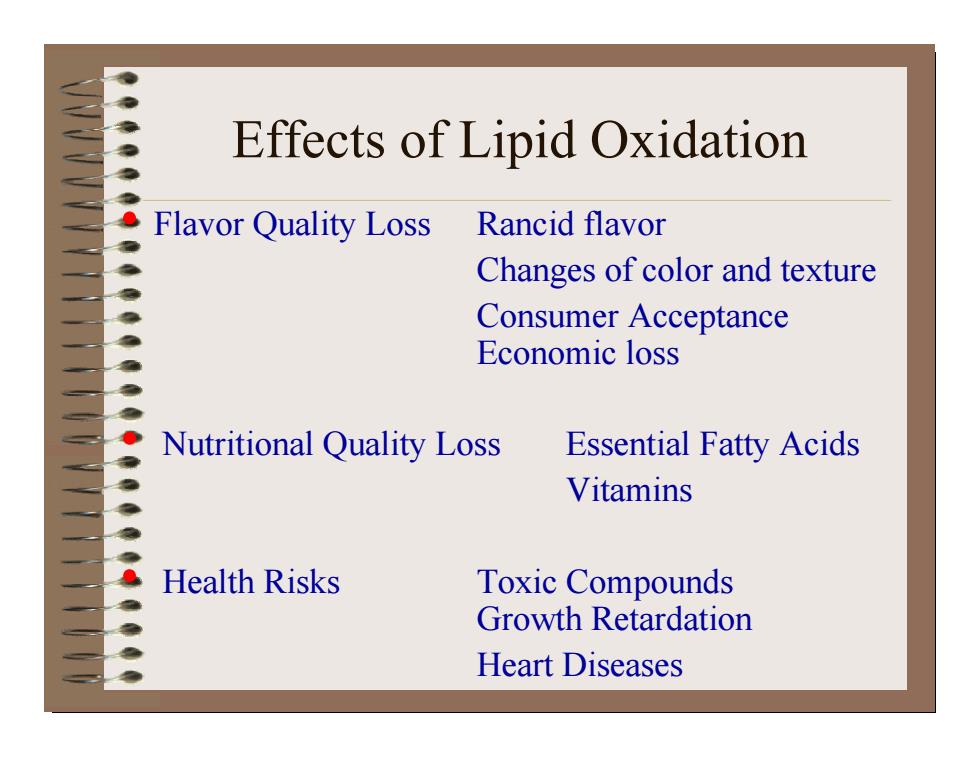
Effects of Lipid Oxidation • Flavor Quality Loss Rancid flavor Changes of color and texture Consumer Acceptance Economic loss • Nutritional Quality Loss Essential Fatty Acids Vitamins • Health Risks Toxic Compounds Growth Retardation Heart Diseases
Effects of Lipid Oxidation • Flavor Quality Loss Rancid flavor Changes of color and texture Consumer Acceptance Economic loss • Nutritional Quality Loss Essential Fatty Acids Vitamins • Health Risks Toxic Compounds Growth Retardation Heart Diseases
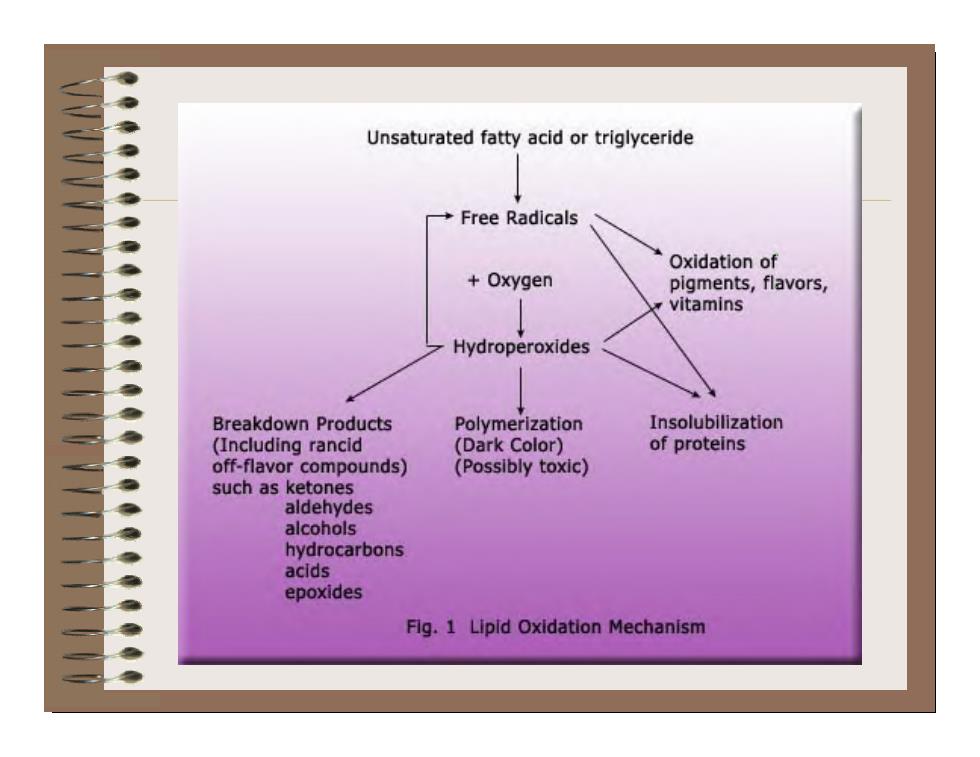
Unsaturated fatty acid or triglyceride Free Radicals Oxidation of +Oxygen pigments,flavors, vitamins Hydroperoxides Breakdown Products Polymerization Insolubilization (Including rancid (Dark Color) of proteins off-flavor compounds) (Possibly toxic) such as ketones aldehydes alcohols hydrocarbons acids epoxides Fig.1 Lipld Oxidation Mechanism
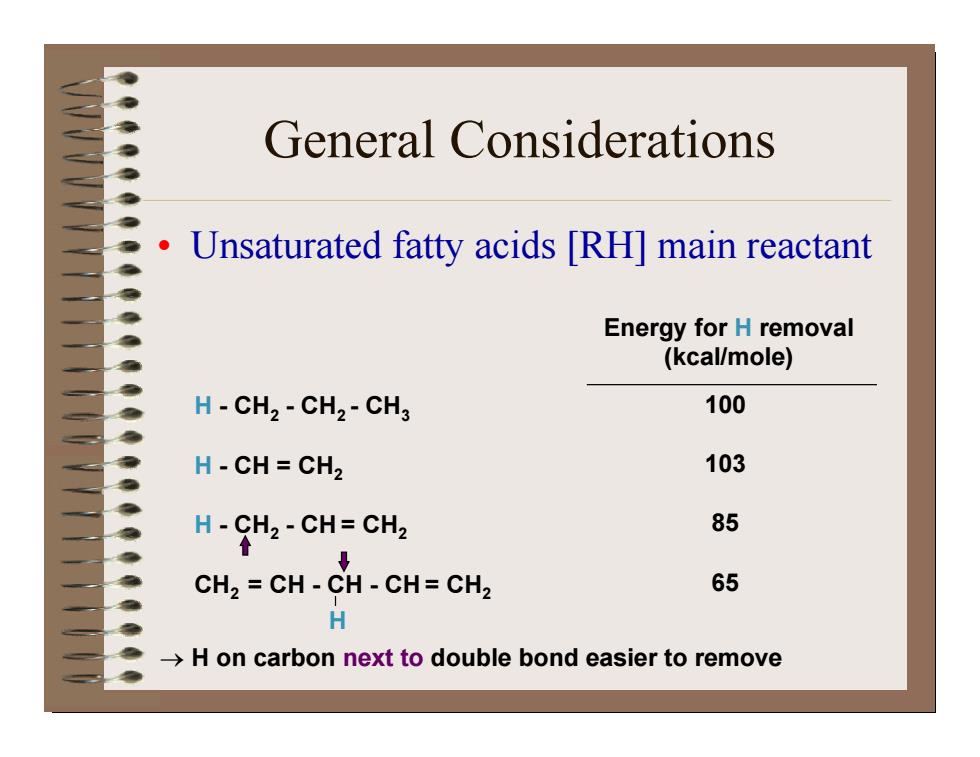
General Considerations • Unsaturated fatty acids [RH] main reactant Energy for H removal (kcal/mole) H - CH 2 - CH2 - CH 3 H - CH = CH2 H - CH 2 - CH = CH 2 CH2 = CH - CH - CH = CH 2 H 100 103 85 65 → H on carbon next to double bond easier to remove
General Considerations • Unsaturated fatty acids [RH] main reactant Energy for H removal (kcal/mole) H - CH 2 - CH2 - CH 3 H - CH = CH2 H - CH 2 - CH = CH 2 CH2 = CH - CH - CH = CH 2 H 100 103 85 65 → H on carbon next to double bond easier to remove
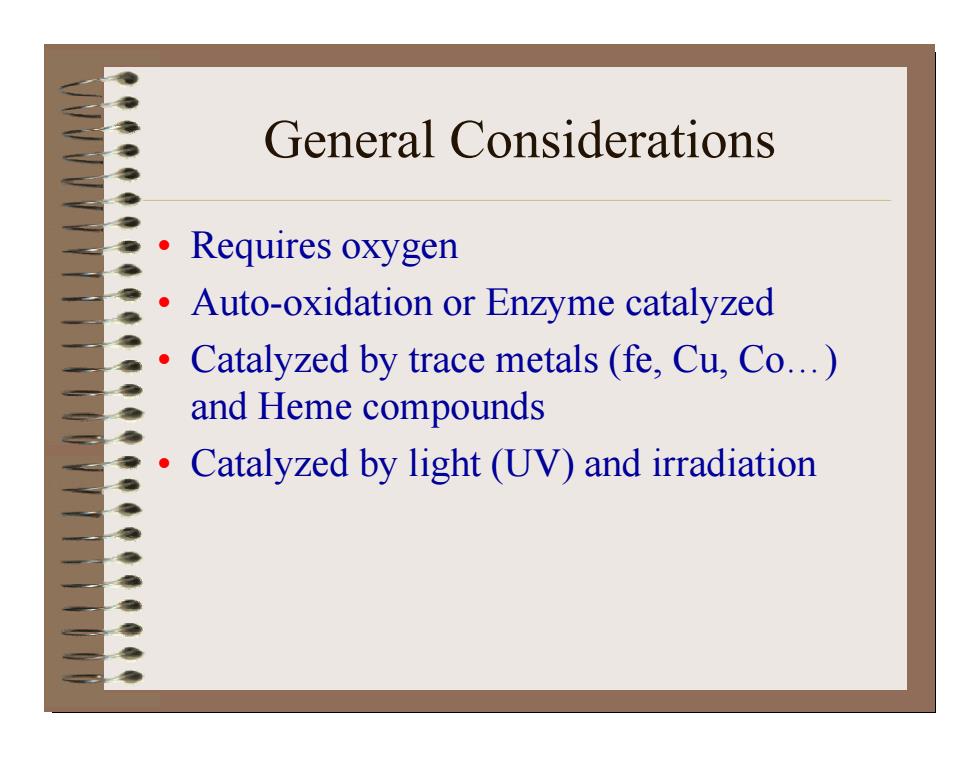
General Considerations • Requires oxygen • Auto-oxidation or Enzyme catalyzed • Catalyzed by trace metals (fe, Cu, Co.) and Heme compounds • Catalyzed by light (UV) and irradiation
General Considerations • Requires oxygen • Auto-oxidation or Enzyme catalyzed • Catalyzed by trace metals (fe, Cu, Co.) and Heme compounds • Catalyzed by light (UV) and irradiation
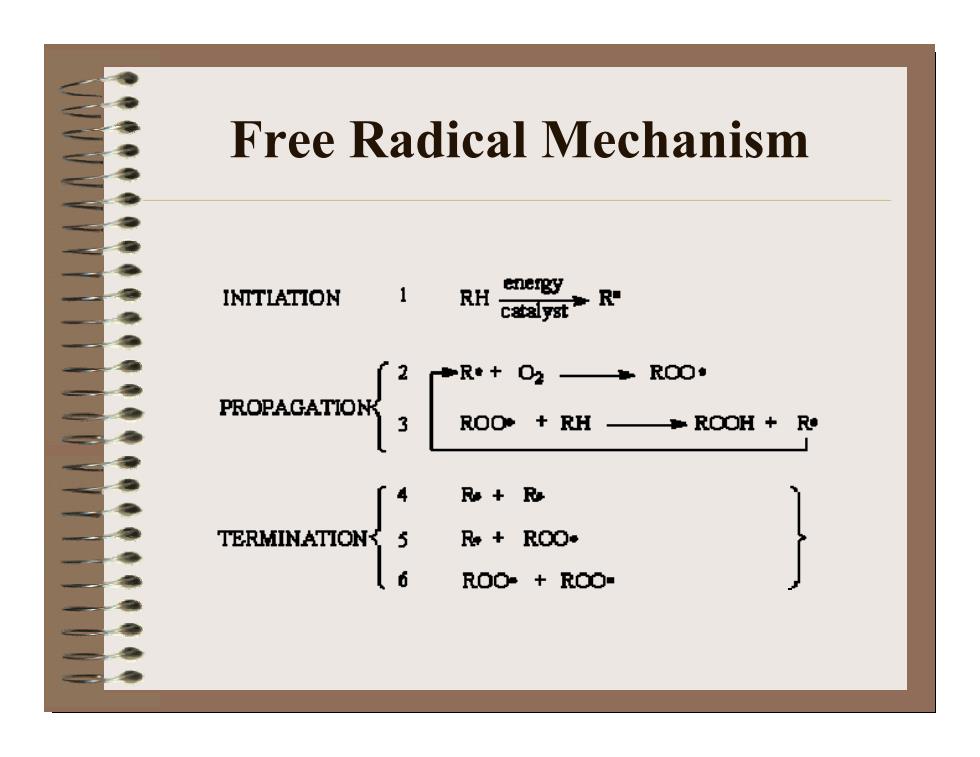
Free Radical Mechanism
Free Radical Mechanism